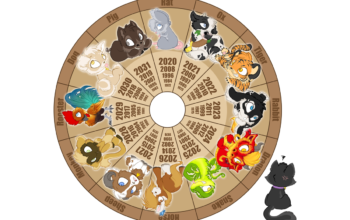Andrew Lloyd Webber/Tim Rice – Everything’s Alright (Jesus Christ Superstar, 1970)
Pink Floyd – Money (1973)
Well, three morrows on, I guess the crick rose. Blame global warming.
So to level set the theme here, no three’s or four’s (or their fractional equivalents), we’re looking at songs with five or seven recurring beats. You know, those tripsy little stumblers that only drummers like; the rest of us just get anxious. Those meters are pretty familiar in some folk circles, particularly of the European dance flavours, often broken in to quick 3+2 or 2+2+3 patterns (and permutations) to pair music and movement. In the four-sided circular world of English-language pop traditions, such cycles can maddening.
I’ll pair them: one seven and one five, each post until y’all stop reading (likely on the morrow, risen crick or no).
Let’s start soft, with one of the grooviest, most tuneful examples of a song in 5/4 you will ever hear. Jesus Christ Superstar was 22-year-old Andrew Lloyd Webber‘s third full-length musical and collaboration with wordsmith Tim Rice. A ‘Rock Opera’ (one of those pre-fab genres that malted but never took root), JCS retells the Passion in aria, ensemble and chorus only, senza recitative, from PoV’s sympathetic, it seemed, to every player other than the saviour himself. Needless to say, the Greatest Story Ever Told With This Particular Spin wasn’t met with a uniformly warm reception.
Three characters sing the current aria Everything’s Alright, but they do so separately so can’t be called a trio proper. Mary Magdalene is soothing a stressed Jesus (Roman Empire problems, Jewish Priest problems, cranky disciples, usurious marketeers) while a judgy Judas throws his minister under the bus (chariot?) for getting anointed with pricy oil while the poor languish. Jesus deflects.
It’s often been said about opera through the centuries that musical innovation happened there first. Its outsized format, massive vocal and instrumental textures, storytelling requirements and visual spectacle demand creativity, if for no reason other than the ‘what the hell do I do next’ conundrum for the composer. Well, in the present case, it made a Rebel of Rhythm out of the Earl of Treacle Himself, Sir Andrew of Soho.
I’m going to be showcasing a bunch of songs in 5/4 metre, but this is one of the only ones that keep that diabolical time signature from wire to wire. But the piece has such a gentle groove with no inner accented beats, that the enchanted listener is largely unaware that something is very, very off. That the measure has as many notes as Satan’s pentagram has points is truly one for the chuckleheap. It’s hard to know if ALW was just screwing with us or if he really wanted to play a bit of word-tone on the satirical subtext, but the punchline is that it works, and it works beautifully. It’s as artful and sensitive a treatment of a brutal musical device as any you’ll ever hear.
Bravo.
Dark Side of the Moon was, of course, a landmark album, and possibly the most collaborative effort that the Floyd’s classic lineup ever made.
By the time it all devolved into a melee of harsh words, lawsuits and shit-talk, one of the giants of progressive music had become little more than the sum of its parts. Roger’s songs were very much Roger’s, Dave’s Dave’s.
And the cracks were already showing here. With savant Alan Parsons engineering and the band producing itself, the studio sessions were a riot of experimentation, resourcefulness and invention. And they were all off to the dance. Magnetic tape was measured and spliced, coins were tied together and shaken in bowls, friends and studio personnel were recorded candidly and overdubbed onto intros and outros. Everything went, and everyone pitched in.
Money – about to become the most-played song in the band’s history – is an artifact of that spirit. I won’t dwell on all the implements sampled to create the rhythm at the beginning of the song, except to say that it actually came out of Roger Waters‘ bass riff that started it all. It’s really simple, walking R&B pattern, with one trivial difference: an entire quarter-note is missing. And the riff is just so relatable, the truncated measure is hardly even noticeable. Like the Lloyd Webber example above, there’s no inner-measure accent, so you never really know that the pattern repeats weirdly until it actually does. The andante, swing tempo helps papier-maché over the oddity even further.
Unlike the Lloyd Webber aria, though, Money doesn’t stay in 7/4 throughout. The part of the song (credited only to Waters) that David Gilmour is responsible for, the tripartite guitar solo, is solidly in 4/4 throughout. That’s it. Session saxophonist Dick Parry, apparently lacking the clout of a full-patch Floyd partner, gets screwed with the 7/4 mess for his own solo contri. Clearly, it was Roger who paid that piper.
So subtly, Money is the sum of its parts. A bassist with a great hook puts up the rhythmic adventure, and a guitarist (and, surprisingly, the singer of this one of Roger’s songs) who snaps it back to familiar forms.
And if there is any doubt whether that collective effort was gently remembered by its partners, chew on this quote, many years later, from the 4/4 part of the equation:
“It’s not a song I would have written; it points to Roger.”



